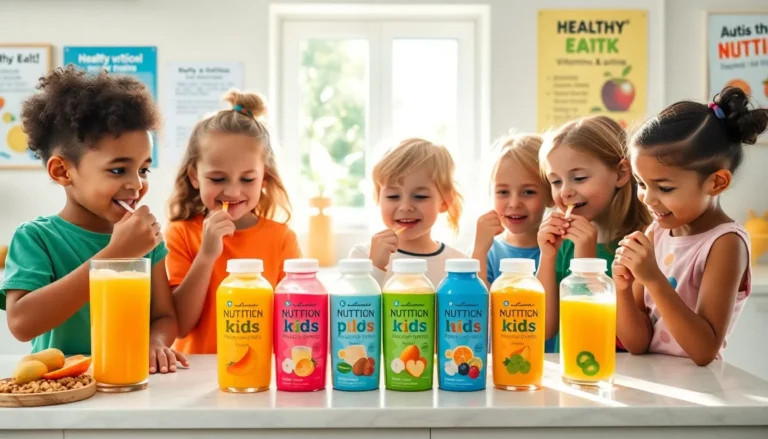When it comes to nutrition, you might think protein is just for bodybuilders or adults looking to pump up their muscles. But lo and behold, protein is just as essential for growing kids, particularly your average 12-year-old. So how much of this macronutrient do they really need? Grab a snack, sit tight, and let’s discover the realm of protein requirements for tweens.
Table of Contents
ToggleUnderstanding Protein Requirements

Protein is one of the three macronutrients, alongside fats and carbohydrates, that are crucial for our bodies. It plays a vital role in growth, development, and overall health. For 12-year-olds, who are often in their growth spurts, protein becomes even more critical. But just how much do they need? The recommended dietary allowance (RDA) for protein varies by age and activity level. Generally, a child aged 12 should aim for around 34 grams of protein per day. These figures can shift slightly depending on several factors, which we will unpack as we go along.
Why Protein Is Important for 12 Year Olds
Now you might wonder, why all the fuss about protein? It’s not just about bulking up. For children, protein helps repair tissues, create enzymes and hormones, and build strong muscles. During the ages of 12 and teenage years, a child’s body is undergoing tremendous changes, and adequate protein intake is screamingly important. Think of protein as the building blocks for growth and development. When kids participate in sports or physical activities, those little muscles need the right fuel to recover. Lack of protein can lead to fatigue, slower recovery times, and potentially stunted growth.
Daily Protein Recommendations for Children
As mentioned, 12-year-olds generally need about 34 grams of protein per day. But here’s a little breakdown for clarity:
- Active Kids: If a child is heavily involved in sports or physical activities, their protein needs may increase, possibly reaching between 46-52 grams daily.
- Sedentary Kids: For those who are more on the couch than the field, sticking closer to that 34 grams should suffice.
Also, keep in mind that not all protein is created equal. Animal proteins (like meat, fish, and dairy) are considered complete proteins, meaning they contain all essential amino acids. Conversely, many plant-based proteins (like beans and nuts) might lack one or two amino acids.
Factors Influencing Protein Needs
Understanding a child’s protein needs involves more than just their age. Several factors come into play:
Sources of Protein for Children
Protein can come from various sources. Meat, poultry, fish, eggs, dairy products, and legumes like beans and lentils are excellent choices. Nuts and seeds, while tasty, offer good fats and also contain protein, though care should be taken about serving sizes and potential choking hazards for younger children.
Balancing Protein with Other Nutrients
It’s essential to remember that protein should not overshadow the other nutrients in a child’s diet. Carbohydrates are crucial for energy, whereas fats are important for brain development. The key is balance. A well-rounded plate should include a variety of foods to meet all nutritional needs.
Signs of Protein Deficiency in Children
Wondering if a child is missing out on protein? Here are some signs to watch for:
- Fatigue: If they seem more tired than usual, it could be an indication of an inadequate diet.
- Slow Growth: If they aren’t growing at the expected rate, their protein intake might be lacking.
- Frequent Illness: A poor protein diet can weaken the immune system, leading to increased sickness.
- Mood Changes: Protein plays a role in hormone regulation, so fatigue can sometimes lead to irritability and mood swings.
Healthy Protein-Rich Meal Ideas for 12 Year Olds
Looking to boost your child’s protein intake? Here are some tasty meal ideas that pack a punch:
- Breakfast: Scrambled eggs with cheese, served with whole grain toast and avocado.
- Lunch: Turkey or chicken wraps loaded with veggies and hummus.
- Snack: Greek yogurt with honey and berries or a handful of almonds.
- Dinner: Grilled salmon with quinoa and steamed broccoli. This not only fills the protein quota but also offers healthy fats and fiber.





